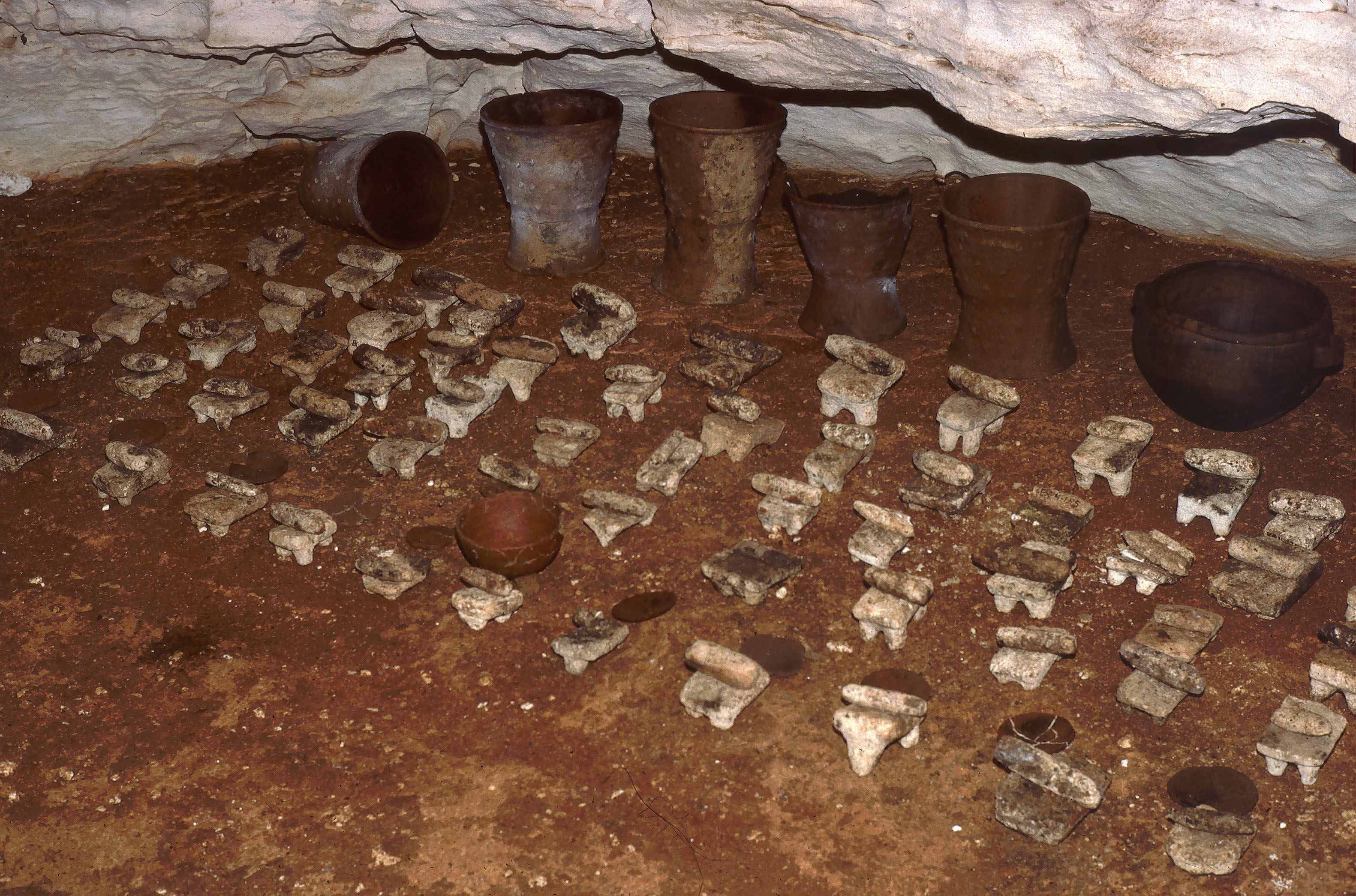Balankanche2 on:
[Wikipedia]
[Google]
[Amazon]
Balankanche (also Balancanche, Balaamcanche, Balaancanche) is an ancient Maya cave site lying at short distance from the archaeological Maya-Toltec city of 

May 2004. pp. 79–83. * E. Wyllys Andrews IV. Balankanche, Throne of the Tiger Priest. Tulane University, 1970. . * {{DEFAULTSORT:Balankanche Cave sites in Mesoamerican archaeology Caves of Mexico Prehistoric North America
Chichen Itza
Chichén Itzá , , often with the emphasis reversed in English to ; from () "at the mouth of the well of the Itza people, Itza people" (often spelled ''Chichen Itza'' in English and traditional Yucatec Maya) was a large Pre-Columbian era, ...
, Yucatan. For more than two thousand years, it has been the focus of rituals dedicated to the Maya rain god, Chaac
Chaac (also spelled Chac or, in Classic Maya language, Classic Mayan, Chaahk ) is the name of the Maya civilization, Maya god of rain, thunder, and lightning. With his lightning axe, Chaac strikes the clouds, causing them to produce thunder and r ...
, and, in the Post-Classic period, also to his Toltec
The Toltec culture () was a Pre-Columbian era, pre-Columbian Mesoamerican culture that ruled a state centered in Tula (Mesoamerican site), Tula, Hidalgo (state), Hidalgo, Mexico, during the Epiclassic and the early Post-Classic period of Mesoam ...
counterpart, Tlaloc. The cave complex was visited by Edward Thompson and Alfred Tozzer
Alfred Marston Tozzer (July 4, 1877 – October 5, 1954) was an American anthropologist, archaeologist, linguist, and educator. His principal area of interest was Mesoamerican, especially Maya, studies. He was the husband of Margaret Castle To ...
in 1905 and has since 1932 been explored and studied by various Mexican and US scholars. Small buildings and platforms surrounded the cave's entrance; inside, stairs, walls, altars and ritual displays of ceramics (especially censers) and small stone implements were discovered. The site has been made accessible for tourists.

Notes
Bibliography
* Bruce Rogers, Grutas de Balancanche. // AMCS Activities Newsletter No. 2May 2004. pp. 79–83. * E. Wyllys Andrews IV. Balankanche, Throne of the Tiger Priest. Tulane University, 1970. . * {{DEFAULTSORT:Balankanche Cave sites in Mesoamerican archaeology Caves of Mexico Prehistoric North America
Cave
Caves or caverns are natural voids under the Earth's Planetary surface, surface. Caves often form by the weathering of rock and often extend deep underground. Exogene caves are smaller openings that extend a relatively short distance undergrou ...
Cave
Caves or caverns are natural voids under the Earth's Planetary surface, surface. Caves often form by the weathering of rock and often extend deep underground. Exogene caves are smaller openings that extend a relatively short distance undergrou ...
Landforms of Yucatán